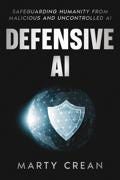AGI and Transforming Human Potential

This post is also available as a podcast if you prefer to listen on the go or enjoy an audio format:
Throughout history, humanity’s greatest strength has been our capacity to create tools that expand our capabilities. From the first stone tools to modern computers, each innovation has built upon previous discoveries, steadily advancing human civilization. Now, we stand at the threshold of our most awe-inspiring creation yet: Artificial General Intelligence (AGI), a potential that sparks wonder and anticipation.
While AGI remains a somewhat fluid concept, we can broadly understand it as a system capable of solving complex problems across multiple domains at a human level or beyond. What makes AGI particularly significant is that it represents not just another tool in our arsenal but potentially the last tool we may need to create directly — as future innovations could emerge from the collaboration between human and artificial minds.
The development of AGI follows humanity’s long tradition of innovation and discovery. Just as the invention of electricity transformed every aspect of daily life, and the creation of computers and the internet revolutionized how we process and share information, AGI promises to fundamentally reshape our relationship with knowledge, creativity, and problem-solving. However, unlike previous technological leaps, AGI’s potential impact on human civilization is unprecedented in scale and scope, a transformation of immense magnitude.
Current trends in AI development reveal three crucial patterns that hint at AGI’s transformative potential. First, we’ve observed that an AI system’s intelligence correlates logarithmically with the resources invested in training and operation — primarily computing power and data. This relationship has proven remarkably consistent across multiple orders of magnitude, suggesting that continued investment will yield predictable improvements in capability.
Think of it like this: If you spend $1 million on AI training and get X amount of intelligence, spending $2 million doesn’t get you 2X intelligence. Instead, you might get something like 1.3X intelligence. For instance, if you invest $ 1 million in training a chatbot to handle customer queries, you might get a certain level of intelligence. If you double the investment to $ 2 million, the chatbot’s intelligence might increase to 1.3 times the initial level. Spend $4 million, and you could get 1.6X intelligence. The gains get smaller as you spend more but are still predictable and reliable.
The fascinating part is that this pattern holds whether you’re spending thousands or billions — it’s like a mathematical rule that doesn’t break. So, while you have to spend more and more to get each additional boost in intelligence, we can predict pretty accurately how much brighter an AI will get based on how much we invest in it.
Perhaps more significantly, the cost of accessing AI capabilities has declined astonishingly. For example, between early 2023 and mid-2024, the cost per token for GPT-4 technology decreased by approximately 150 times. This price reduction rate — roughly tenfold every twelve months — far outpaces Moore’s Law, which has traditionally guided our expectations for technological advancement. When we combine this rapid cost reduction with the third observation — that the socioeconomic value of intelligence increases super-exponentially — we begin to glimpse the profound implications for society.
As we begin to deploy AI agents that function like virtual colleagues, we’re witnessing the early stages of a transformation in how work is performed, and value is created. Consider the example of software engineering: while current AI agents may not generate groundbreaking innovations independently, they can already handle many routine tasks typically performed by experienced engineers. The potential for amplifying human productivity becomes staggering when we extrapolate this capability across thousands or millions of such agents and extend it to other knowledge-work domains.
To put this in more understandable terms, if processing a page of text costs $1 in early 2023, by the beginning of 2025 it cost less than a penny. This dramatic price drop means more people and businesses can afford to use AI technology, potentially leading to much wider adoption and impact on society.
This transformation mirrors the impact of the transistor — a fundamental scientific breakthrough that gradually permeated every corner of the economy. Just as we now take for granted the miraculous capabilities of our electronic devices, future generations may view AI assistance as an unremarkable aspect of daily life. However, the integration of AGI into society will likely be more profound and far-reaching than any previous technological revolution.
While daily life in 2025 may resemble 2024, the pace of change will become difficult to ignore. The world will continue valuing human agency, willfulness, and determination — perhaps even more. AGI will serve as an unprecedented amplifier of human intention. This means that AGI will not replace human decision-making but rather enhance our ability to make impactful decisions, enabling individuals to achieve impacts previously requiring entire organizations.
This transformation will likely be uneven across different societal and economic sectors. Scientific progress may accelerate dramatically while other industries experience more gradual change. We expect the cost of many goods and services to decrease substantially as intelligence and energy become more abundant and affordable. However, the value of inherently scarce resources like land and unique human qualities like creativity and resilience, may increase significantly.
The technical pathway toward AGI appears relatively straightforward, but the societal implications require careful consideration. As AI capabilities become more powerful, we must balance safety considerations with individual empowerment. This may involve making more technology open-source and giving people greater control over AI tools. However, we must also be vigilant against potential misuse of AGI, such as in cyber warfare or mass surveillance. Therefore, maintaining appropriate safeguards against such misuse is crucial in developing and integrating AGI into society.
The distribution of AGI’s benefits presents both opportunities and challenges. While technological progress has historically improved average outcomes across most metrics, it hasn’t automatically led to greater equality. We must be particularly attentive to the shifting balance between capital and labor, potentially implementing novel solutions such as universal ‘compute budgets.’ These budgets would ensure everyone has a fair share of computing resources, democratizing access to AGI’s benefits. We could also focus on dramatically reducing intelligence access costs to promote equality further.
Looking ahead to 2035, we envision a world where every individual has access to intellectual capabilities equivalent to the combined human knowledge of 2025. This democratization of genius through AGI could unlock unprecedented creative potential, especially among talented individuals who currently lack the resources to express their abilities fully. By making AGI universally accessible, we can empower every individual to contribute to a future where human ingenuity, augmented by artificial intelligence, drives progress and prosperity for all.
The development of AGI represents more than just another step in technological evolution — it marks the beginning of a new chapter in human civilization. While the challenges are significant, the potential benefits of successfully integrating AGI into society could transform society in ways we are only beginning to imagine. Our task now is to ensure this transformation serves the broader interests of humanity while preserving the essential qualities that make us human.
Thank you for being a part of this fascinating journey.
BearNetAI. From Bytes to Insights. AI Simplified.
BearNetAI is a proud member of the Association for the Advancement of Artificial Intelligence (AAAI), and a signatory to the Asilomar AI Principles, committed to the responsible and ethical development of artificial intelligence.
Books by the Author:


Glossary of AI Terms Used in This Post
Artificial General Intelligence (AGI): A form of AI that can understand, learn, and apply knowledge across various tasks, similar to human intelligence.
Artificial Narrow Intelligence (ANI): AI systems designed for specific tasks, such as image recognition or language translation, without the ability to generalize.
Deep Learning: A subset of machine learning involving neural networks with multiple layers to model complex patterns in data.
Ethical AI: The branch of AI research focusing on ensuring fairness, transparency, and accountability in AI systems.
Machine Learning: A method of data analysis that automates analytical model building using statistical techniques.
Neural Networks: Computational models inspired by the human brain, used in deep learning to process data in layers.
Reinforcement Learning: A machine learning technique where an agent learns by interacting with an environment and receiving rewards for desirable actions.
Superintelligence: A hypothetical form of AI surpassing human intelligence in all aspects, including creativity, decision-making, and emotional intelligence.
Transfer Learning: Applying knowledge gained from one problem to a different but related problem.
Weak AI: Another term for artificial narrow intelligence (ANI) is AI designed for specialized tasks.
Categories
AI & Society, Technological Innovations, Futurism & AI Predictions, Ethics of AI, Artificial General Intelligence
Citations
Bostrom, N. (2014). Superintelligence: Paths, Dangers, Strategies. Oxford University Press.
Goertzel, B. (2007). Artificial General Intelligence. Springer.
Kurzweil, R. (2005). The Singularity Is Near: When Humans Transcend Biology. Viking Press.
LeCun, Y., Bengio, Y., & Hinton, G. (2015). Deep Learning. Nature, 521(7553), 436–444.
Russell, S., & Norvig, P. (2020). Artificial Intelligence: A Modern Approach. Pearson.
Tegmark, M. (2017). Life 3.0: Being Human in the Age of Artificial Intelligence. Knopf.
Yudkowsky, E. (2008). Artificial Intelligence as a Positive and Negative Factor in Global Risk. Oxford University Press.
BearNetAI, LLC | © 2024, 2025 All Rights Reserved